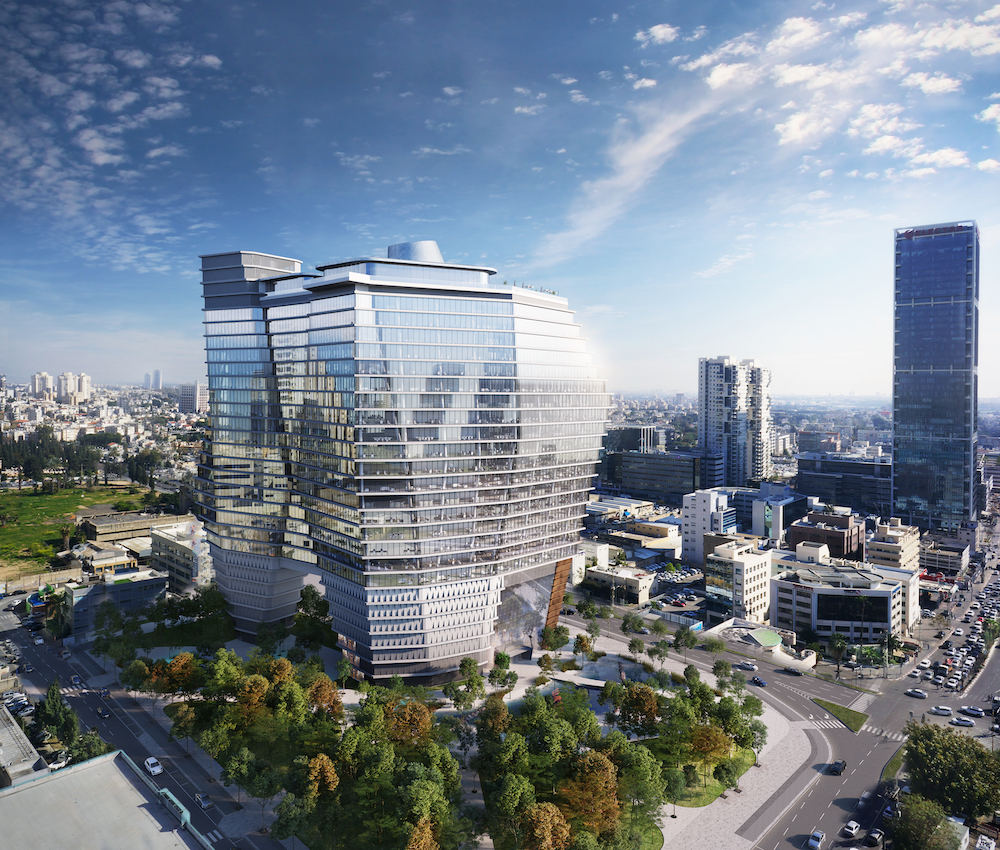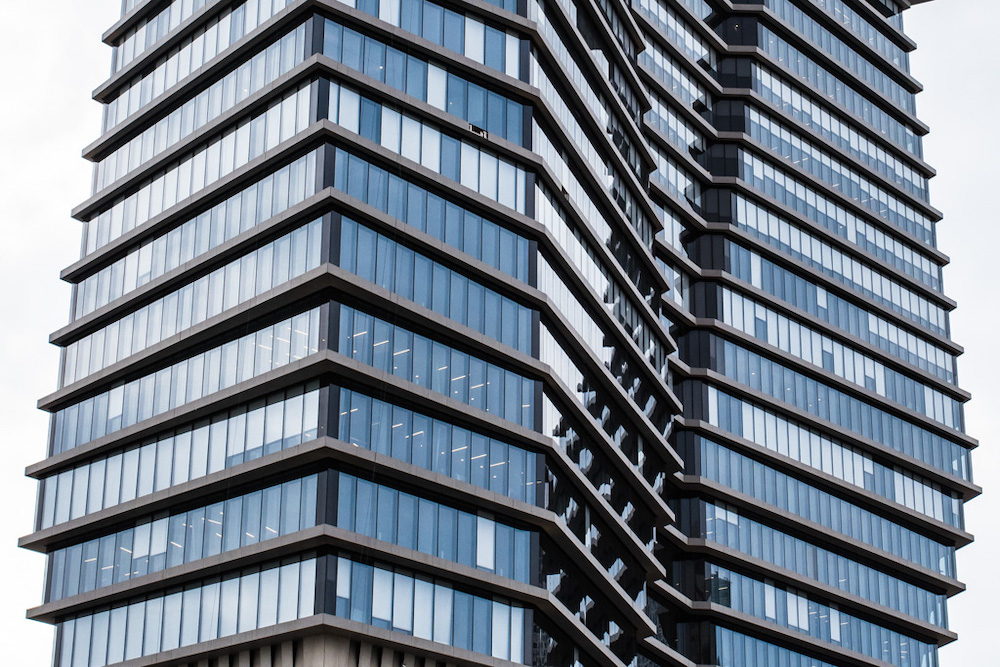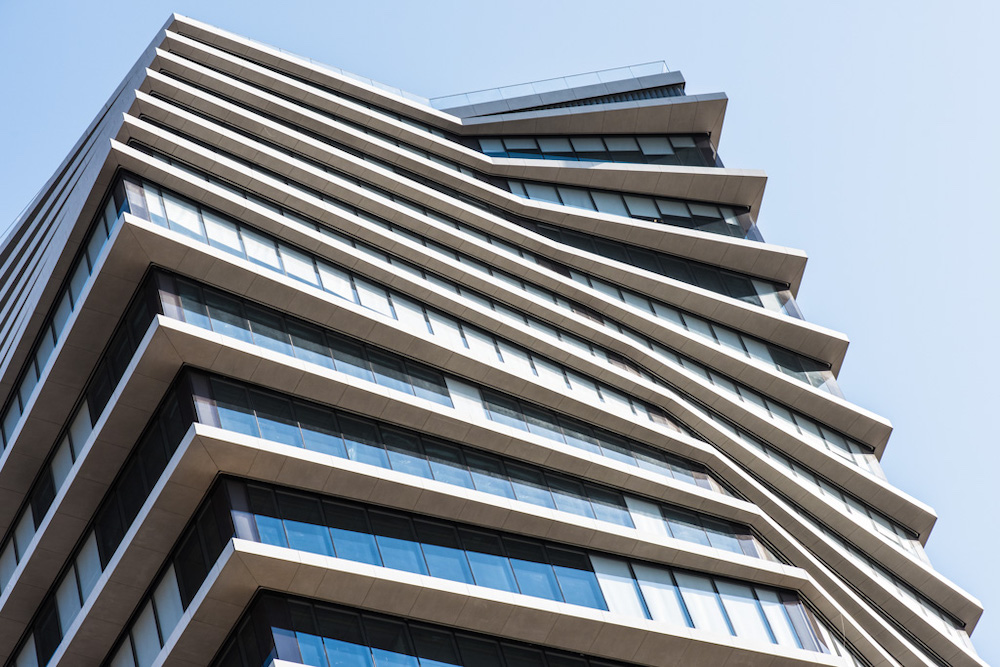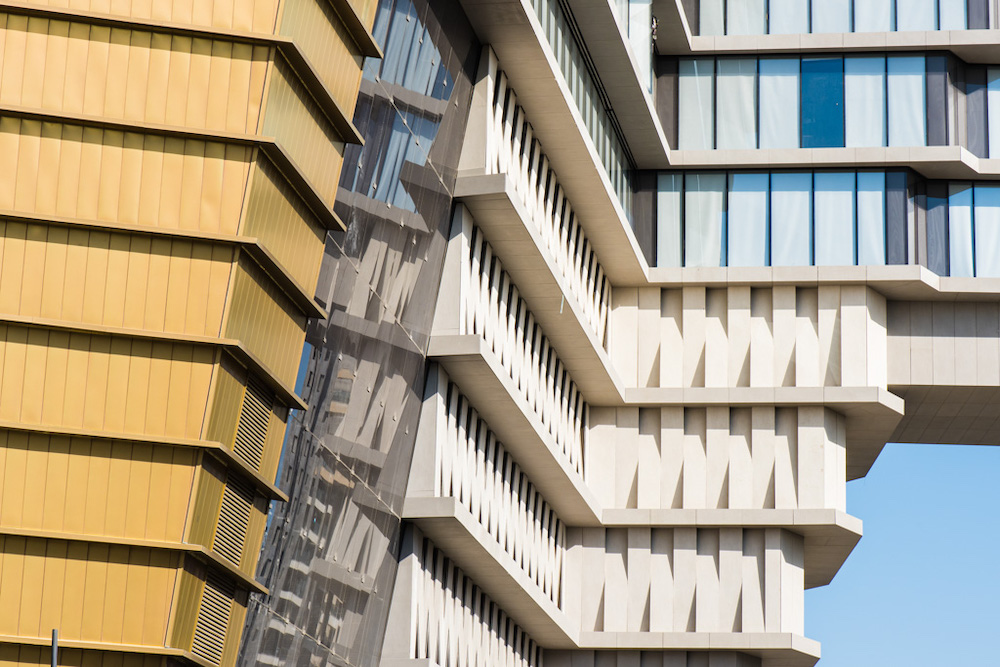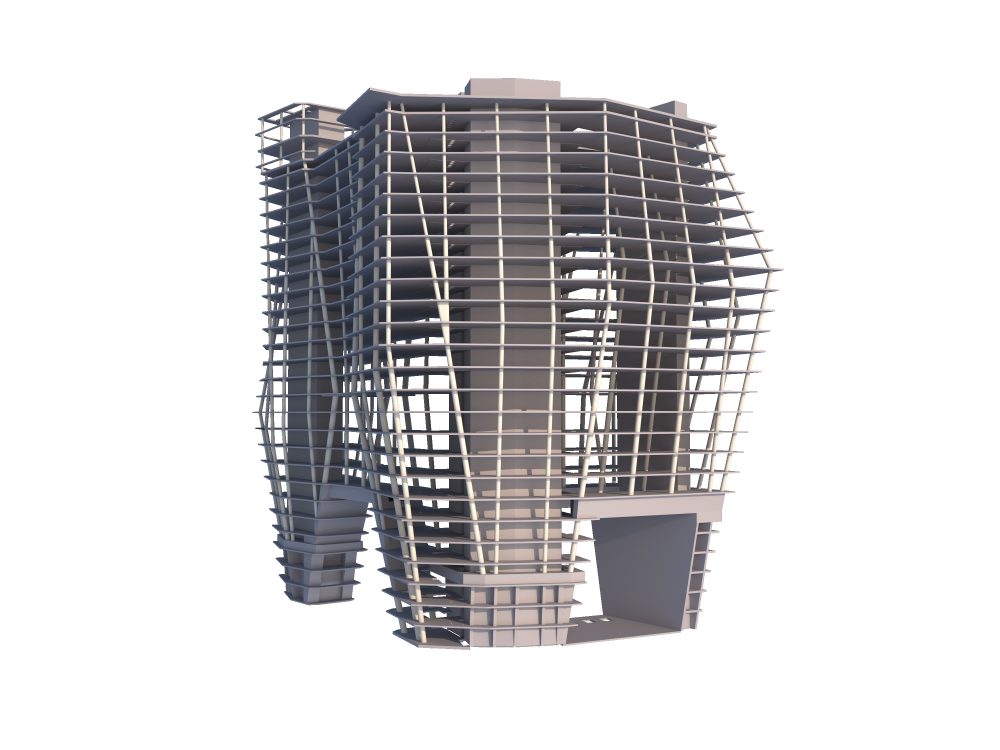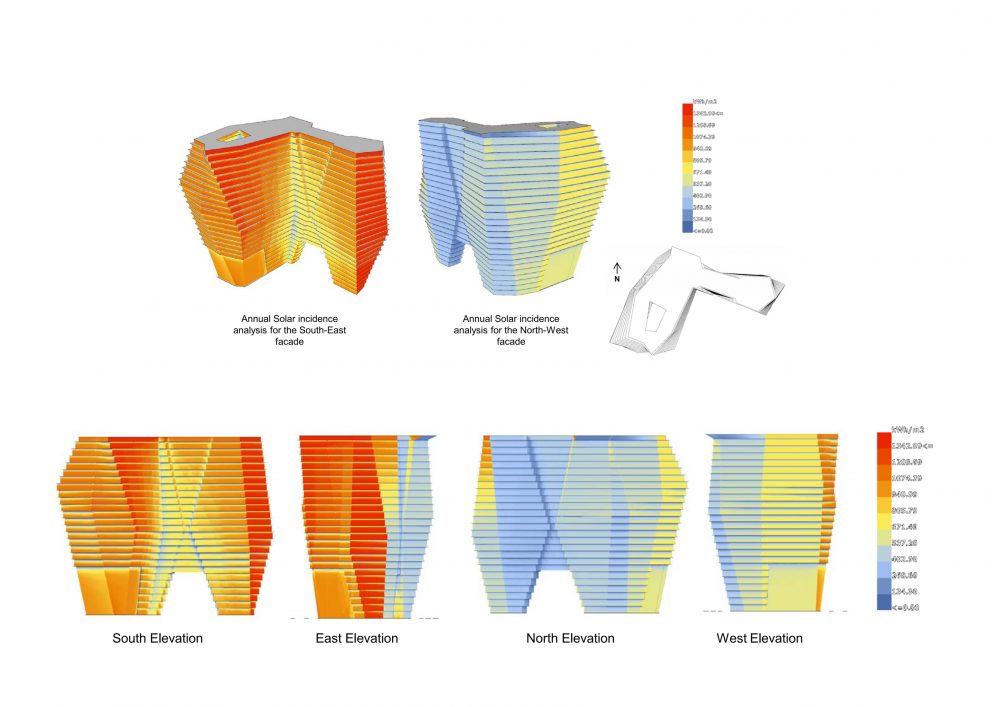The recently completed Totzeret Haaretz (ToHa) office tower on the eastern border of Tel Aviv offers a new public-facing approach to superblock megadevelopments, while simultaneously delivering a remarkably unique design merging glass, sintered stone, and brass. Designed by Ron Arad Architects with the help of executive architects Yashar Architects, the 29-story tower is the first phase of a larger project that will include an additional development of twice the height.
The building rises on a trio of stiletto-like heels, which constitute a footprint of just under 16,150 square feet. Besides enhancing the nearly full-block public plaza surrounding the building, the seven-story plinths house the bulk of the tower’s mechanical infrastructure—permitting the roof to function as an open space with a perimeter walkway and two terraces. To allow for the proper ventilation of the mechanical system while maintaining aesthetic standards required for a street-level facade, the design team developed a permeable system of cross-mounted DEKTON sintered stone panels supplied by Spanish-manufacturer Cosentino. The panels are approximately 10-feet tall and 2-feet wide and are fastened to a mullion between the respective floor plates. The panels were produced in six colors, creating a visual gradient across the weaved-stone street wall.
Moving upwards, the tower rotates, widens, and tapers to dramatic effect. Each floor is cloaked in double-glazed Low-E glass curtain wall modules, measuring approximately 12.5-feet by 4.5-feet, inset from a protruding concrete floorplate. The double-skin glass system was developed in collaboration with the contractor, Aluminum Construction, and was tested at the IFC Rosenheim research lab on the southern border of Bavaria, Germany. “Each unit contains an integrated reflective blind manufactured by Pellini Industries and an automated air inlet system which periodically pumps air into the glazed cavity,” said Ron Arad Architects. “The warm air exits the unit through an outlet opening at the top.”
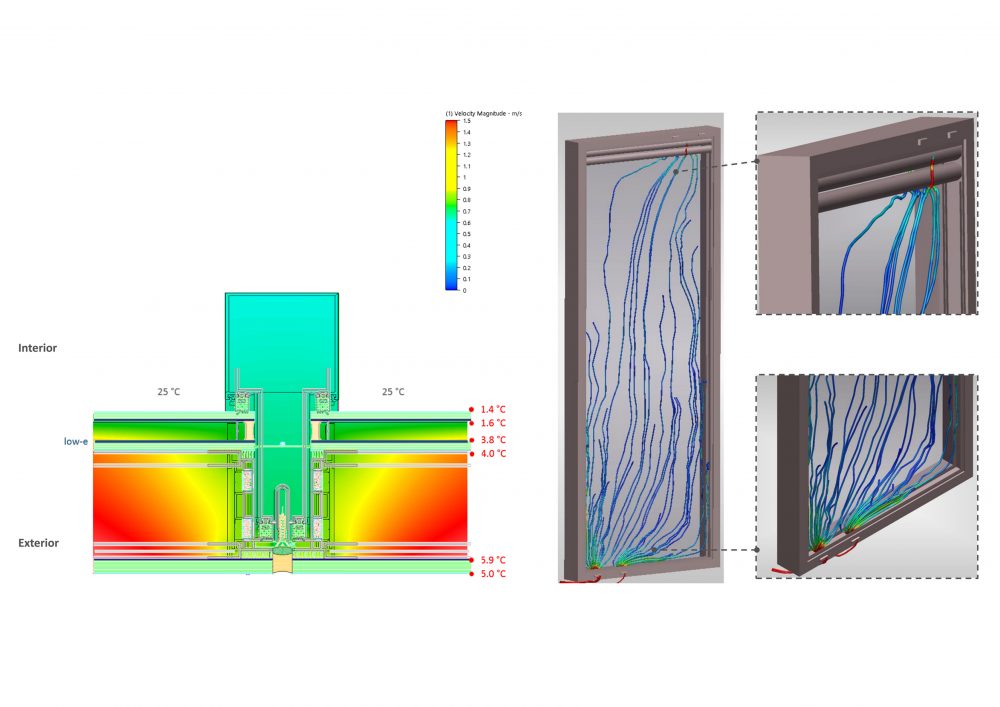
Due to the unique geometry of the project’s massing—no two floors of the tower are the same—there is a significant range of solar incidence across each elevation. Using computational tools, the design team determined the appropriate width of the floor plate extrusion, which serves as a passive shading device for the floor below. Similar to the base of the building, the extruding elements are clad with sintered stone panels measuring approximately half-an-inch thick and 6.5-feet wide.
A particularly stylistic flourish is found on the south elevation facing HaShalom Road, as the first seven stories of the section are clad in a brass sheathing. The pattern for the sheathing mirrors and twists the extruding floor plates above, creating a complex matrix of sunlight reflection and shading that varies throughout the day. Over time, the sheathing will patina from its current gold-like composition to a more subtle shade of bronze.
The entrance is demarcated by a nearly 100-foot-tall structural glass curtain wall, which leads to a seven-story high atrium with a view to the summit of the tower.
